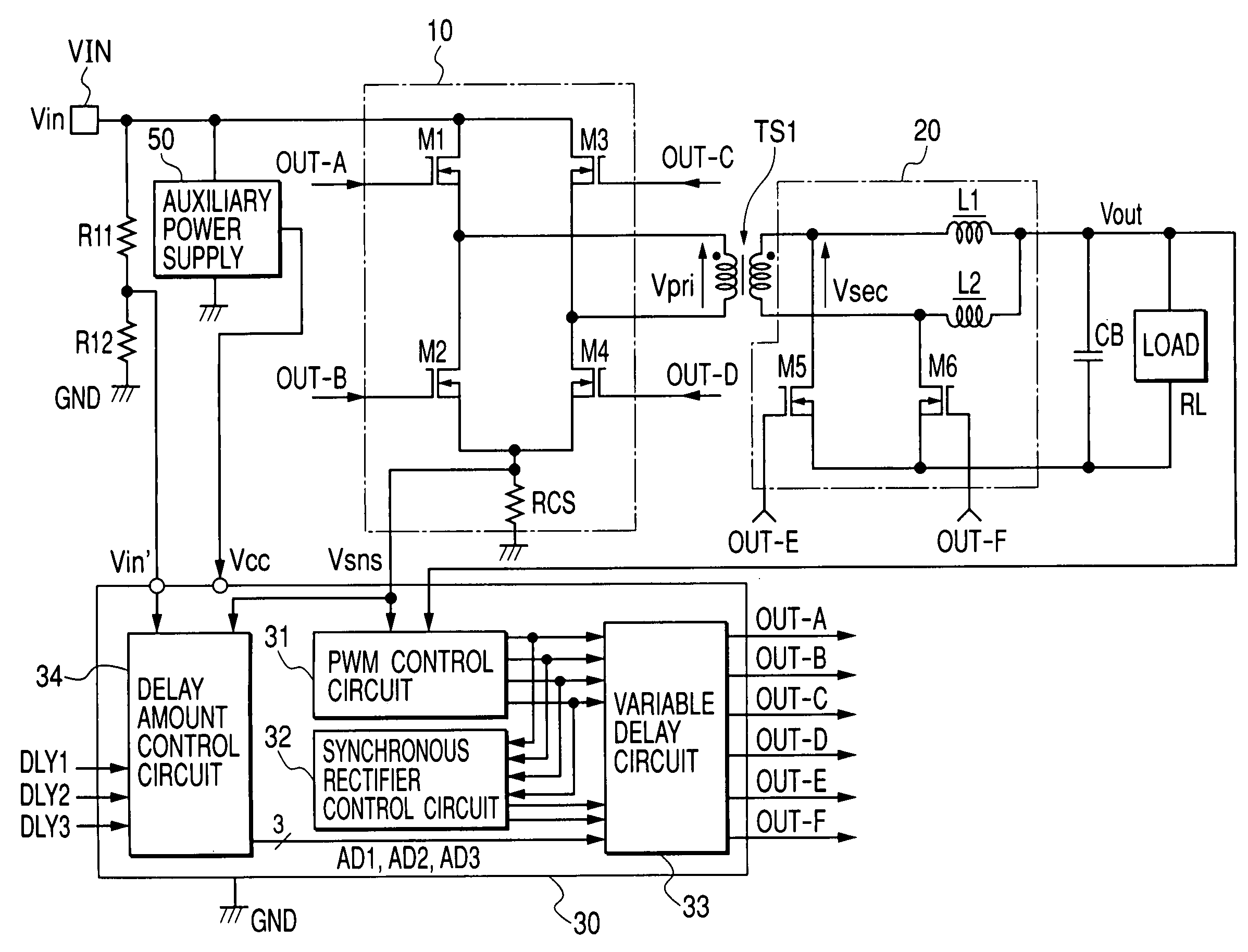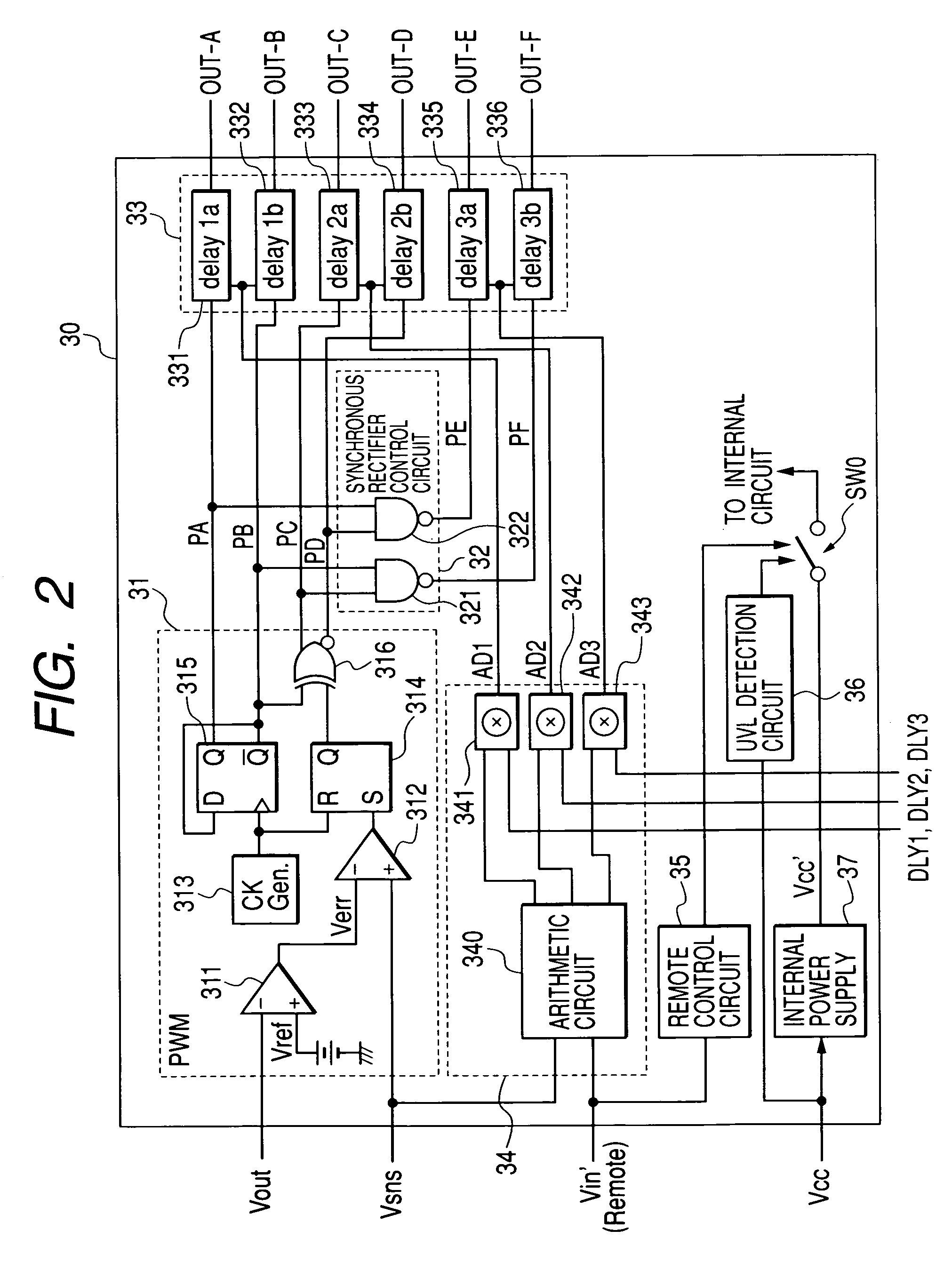Switching power supply device and the semiconductor integrated circuit for power supply control
a technology of power supply device and integrated circuit, which is applied in the direction of electric variable regulation, process and machine control, instruments, etc., can solve the problems of increasing switching loss, heat release value, and failure to miniaturize, and achieve the effect of reducing switching loss
- Summary
- Abstract
- Description
- Claims
- Application Information
AI Technical Summary
Benefits of technology
Problems solved by technology
Method used
Image
Examples
first embodiment
[0042]FIG. 1 shows a DC-DC converter according to the present invention. In FIG. 1, the reference symbol TS1 represents a transformer for voltage conversion. The reference numeral 10 represents a switching circuit to drive a primary coil of the transformer TS1 with alternate currents. The reference numeral 20 represents a full-wave rectifier circuit to rectify an AC voltage induced by the secondary coil of the transformer TS1 and convert the voltage into a DC voltage. The reference numeral 30 represents an integrated control circuit (hereafter referred to as a power control IC) to control to drive switch MOSFETs M1 through M4 constituting the above-mentioned switching circuit 10 and synchronous rectification MOSFETs M5 and M6 constituting the rectifier circuit 20. The reference numeral 50 represents an auxiliary power circuit such as a switching regulator that is supplied with 48 V input DC voltage Vin and generates to supply DC power voltage Vcc such as 12 V needed for the power co...
second embodiment
[0100]The following describes the DC-DC converter according to the present invention with reference to FIG. 15. The mutually corresponding elements and circuits in FIGS. 15 and 1 are designated by the same reference numerals and a duplicate description is omitted for simplicity.
[0101]Instead of the delay amount control circuit 34 in the previous embodiment, the embodiment in FIG. 15 provides input terminals P11 and P12, a 0 V decision circuit 41, an external terminal P13, and difference circuits 42a and 42b. The input terminal P11 and P12 monitor the terminal voltages V11 and V12 of the primary coil in the switching circuit 10. The 0 V decision circuit 41 comprises comparators CMP1 through CMP4. The external terminal P13 supplies voltage VBS used as a criterion. The difference circuits 42a and 42b generate differences between the voltage Vin′ proportional to the input voltage Vin divided by the resistors R11 and R12 and the coil's terminal voltages V11 and V12, respectively.
[0102]Ac...
PUM
 Login to View More
Login to View More Abstract
Description
Claims
Application Information
 Login to View More
Login to View More - R&D
- Intellectual Property
- Life Sciences
- Materials
- Tech Scout
- Unparalleled Data Quality
- Higher Quality Content
- 60% Fewer Hallucinations
Browse by: Latest US Patents, China's latest patents, Technical Efficacy Thesaurus, Application Domain, Technology Topic, Popular Technical Reports.
© 2025 PatSnap. All rights reserved.Legal|Privacy policy|Modern Slavery Act Transparency Statement|Sitemap|About US| Contact US: help@patsnap.com



